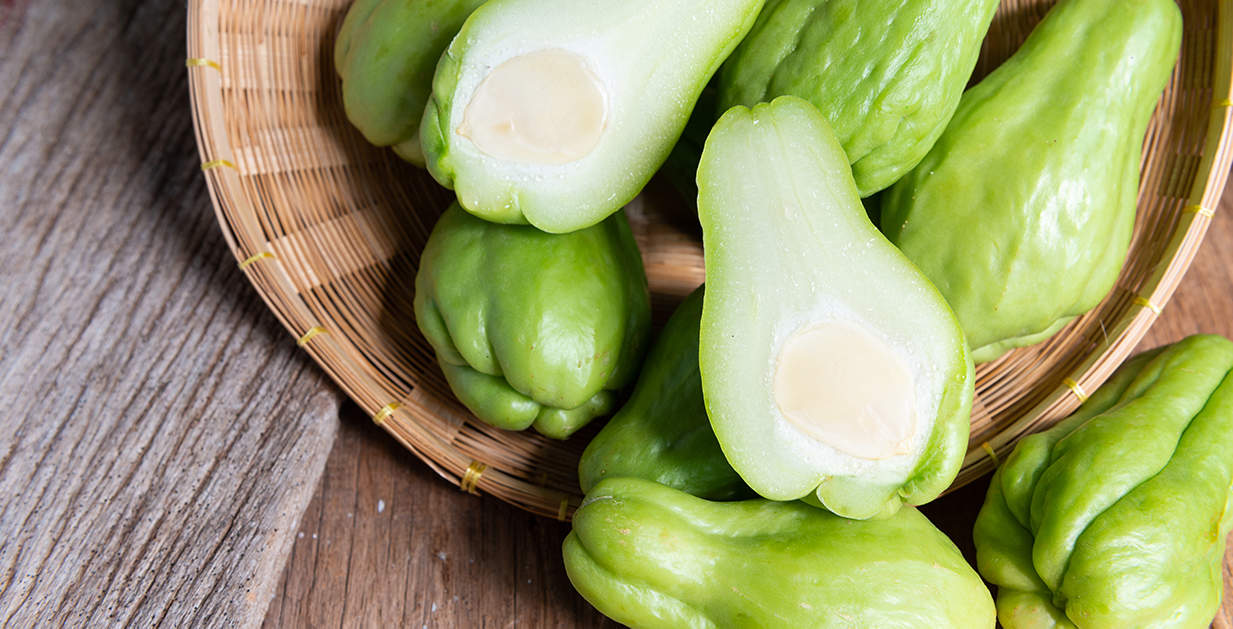
Chayote squash might not be the most famous vegetable, but it’s packed with surprises. Ever wondered what makes this green, wrinkly fruit so special? Chayote is not just a staple in Latin American cuisine; it’s a nutritional powerhouse. With a mild flavor and crisp texture, it can be used in countless dishes. But there’s more to this squash than meets the eye. Did you know it’s rich in vitamins, minerals, and antioxidants? Plus, it’s low in calories, making it a great addition to any diet. Ready to learn some cool facts about this underrated veggie? Let’s dive in!
Key Takeaways:
- Chayote squash, also known as vegetable pear, is a low-calorie, nutrient-packed vegetable with a mild flavor. It can be used in various dishes and has a rich cultural history.
- Chayote plants thrive in warm climates and can be grown by planting the whole fruit. The entire plant, including the leaves and roots, is edible, and it has diuretic and anti-inflammatory properties.
What is Chayote Squash?
Chayote squash, also known as vegetable pear or mirliton, is a versatile and nutritious vegetable. Originating from Central America, it has found its way into kitchens worldwide. Here are some fascinating facts about this unique squash.
-
Chayote belongs to the gourd family, Cucurbitaceae, which includes cucumbers, melons, and pumpkins.
-
The vegetable is typically light green with a wrinkled appearance and a pear-like shape.
-
Chayote is also known by various names, including choko, chocho, and christophene.
Nutritional Benefits of Chayote Squash
Chayote is not just tasty but also packed with nutrients. Let's dive into the health benefits it offers.
-
Chayote is low in calories, making it an excellent choice for weight management.
-
It is rich in dietary fiber, which aids in digestion and promotes a healthy gut.
-
The squash contains essential vitamins like vitamin C, vitamin B6, and folate.
-
Chayote is a good source of minerals such as potassium, magnesium, and manganese.
-
It has antioxidant properties that help combat free radicals in the body.
Culinary Uses of Chayote Squash
Chayote's mild flavor and crunchy texture make it a versatile ingredient in various dishes. Here are some ways to use it in your cooking.
-
Chayote can be eaten raw in salads, adding a crisp texture.
-
It can be sautéed with garlic and olive oil for a simple yet delicious side dish.
-
The vegetable can be stuffed with meat or cheese and baked for a hearty meal.
-
Chayote is often used in soups and stews, absorbing the flavors of the broth.
-
It can be pickled, providing a tangy addition to sandwiches and tacos.
Growing Chayote Squash
Interested in growing your own chayote? Here are some tips to get you started.
-
Chayote plants thrive in warm climates with plenty of sunlight.
-
They require well-drained soil rich in organic matter.
-
The plants are vigorous climbers, so provide a sturdy trellis or support.
-
Chayote can be propagated by planting the whole fruit, as it contains a single large seed.
-
Regular watering is essential, but avoid waterlogging the soil.
Historical and Cultural Significance
Chayote has a rich history and cultural importance in various regions. Let's explore some interesting facts about its background.
-
The vegetable has been cultivated since pre-Columbian times in Central America.
-
In Mexico, chayote is a staple in traditional dishes like chayote relleno and sopa de chayote.
-
The name "chayote" comes from the Nahuatl word "chayotli," used by the Aztecs.
-
Chayote is celebrated in festivals and culinary events in regions where it is widely grown.
Fun and Unusual Facts
Chayote has some quirky and lesser-known aspects that make it even more intriguing.
-
The entire plant, including the leaves, stems, and roots, is edible.
-
Chayote vines can grow up to 12 meters long, making them quite impressive climbers.
-
The vegetable is sometimes used in folk medicine for its diuretic and anti-inflammatory properties.
Final Thoughts on Chayote Squash
Chayote squash, with its unique flavor and nutritional benefits, deserves a spot in your kitchen. This versatile veggie can be used in soups, salads, stir-fries, and even desserts. Packed with vitamins, minerals, and fiber, it supports digestion, heart health, and immune function. Plus, its low-calorie content makes it a great choice for those watching their weight.
Growing chayote is relatively easy, requiring minimal care once established. Its climbing vines can add a touch of green to your garden. Whether you're a seasoned gardener or a beginner, chayote offers a rewarding experience.
Next time you're at the market, grab a chayote squash and experiment with new recipes. You'll not only enjoy its taste but also reap its health benefits. Give this underappreciated gem a try and see how it can enhance your meals.
Frequently Asked Questions
Was this page helpful?
Our commitment to delivering trustworthy and engaging content is at the heart of what we do. Each fact on our site is contributed by real users like you, bringing a wealth of diverse insights and information. To ensure the highest standards of accuracy and reliability, our dedicated editors meticulously review each submission. This process guarantees that the facts we share are not only fascinating but also credible. Trust in our commitment to quality and authenticity as you explore and learn with us.


